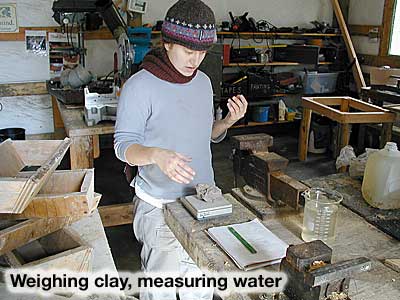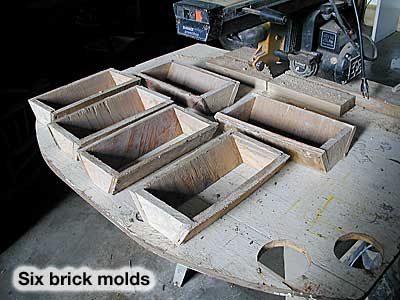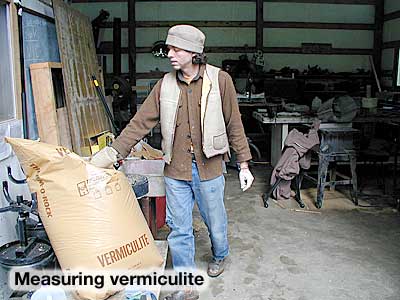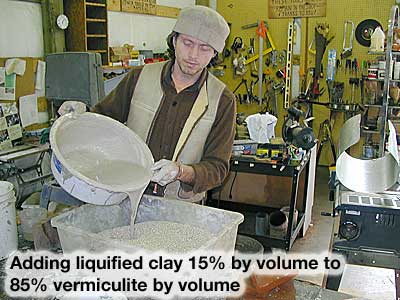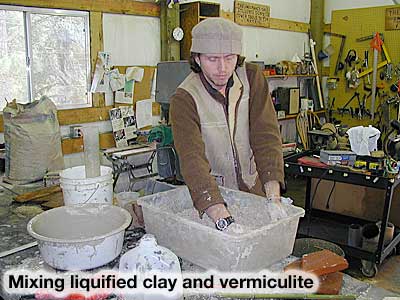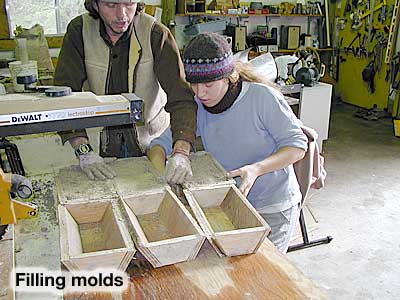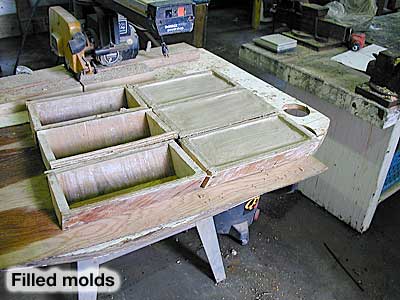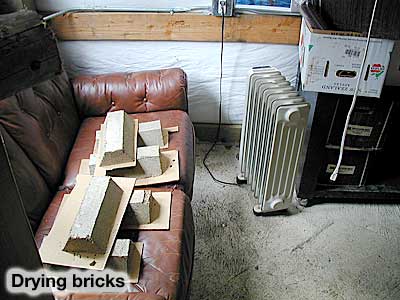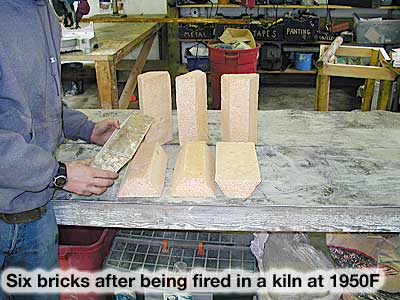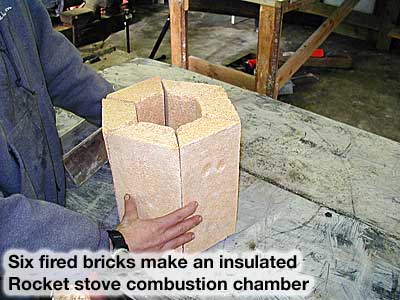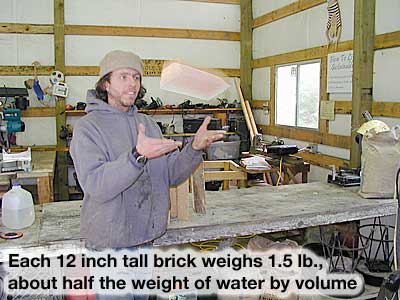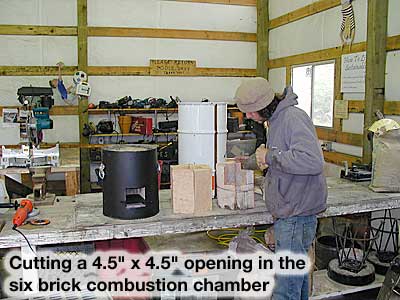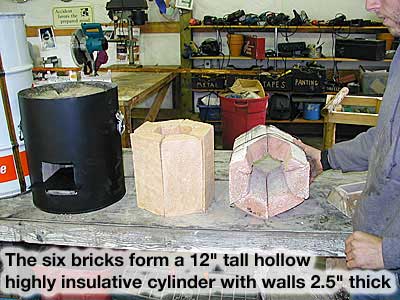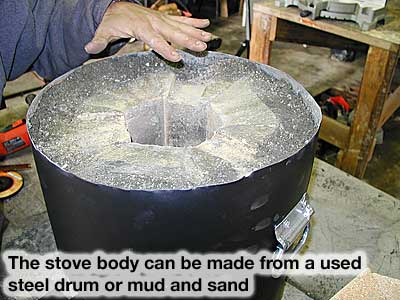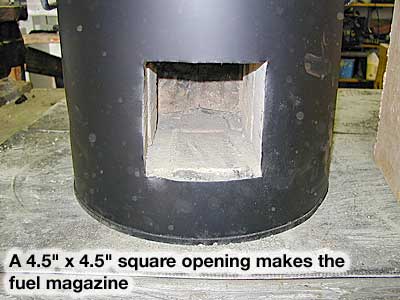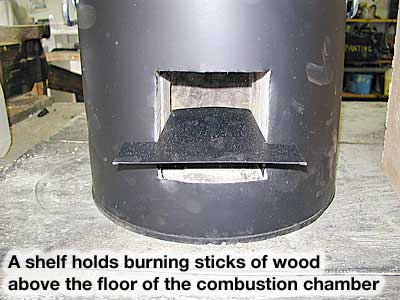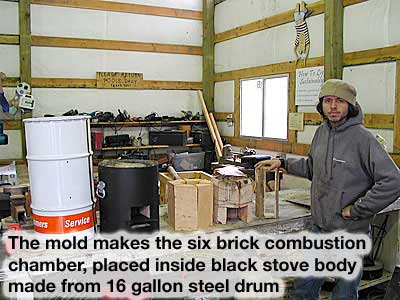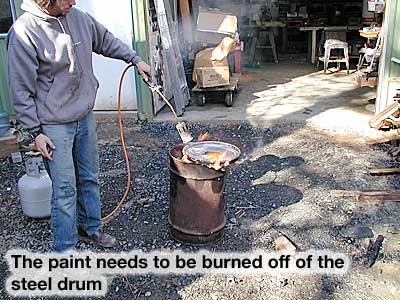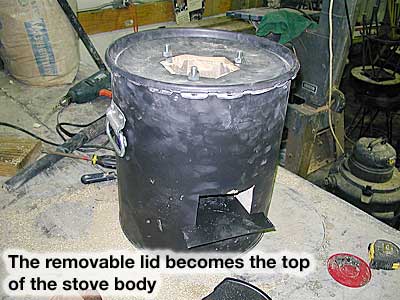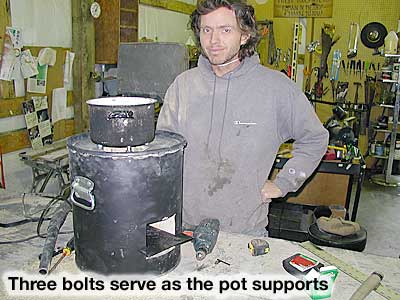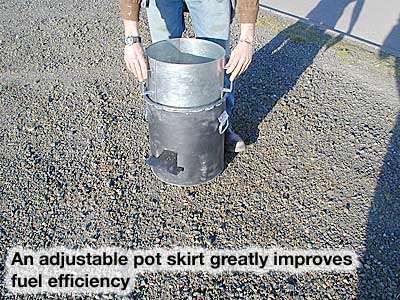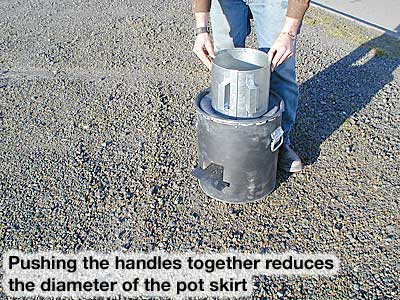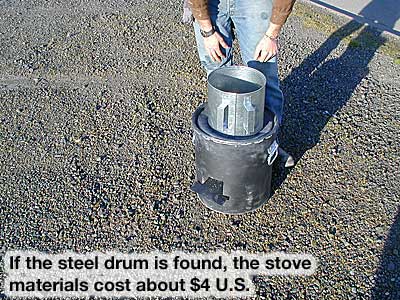Making Insulative Clay Combustion Chambers
Dean Still, Aprovecho Research Institute, March 2003
Aprovecho Research Center began building Lorena earthen stoves in 1976. Testing of these stoves showed that the earth was, in fact, absorbing heat that could have helped to cook food. Also, the heavy earthen walls around the fire kept the fire colder than necessary, creating unhealthy smoke. Aprovecho researchers began looking for alternative materials and methods of designing stoves. They learned that a simple insulated combustion chamber shaped like the capital letter "L" helped to save biomass and decreased smoke when cooking.
The following slide show details how to create a 6 brick combustion chamber made from inexpensive and locally available materials. Light weight, insulative, heat resistant bricks can be made from:
- vermiculite 85% and clay 15%
- pumice 85% and clay 15%
- sawdust 50% and clay/cement 50%
- charcoal 50% and clay 50%
- perlite 85% and clay 15%
The bricks are shaped in a form, dried and then fired in a kiln at 1950 F (1000 C). Presently, Dr. Margaret Pinnell at the University of Dayton and Dr. Dale Andreatta at S.E.A., Inc. are testing the recipes for durability and effectiveness in stoves. Sawdust/clay bricks have been used in stoves for one year without breaking.
The 6 brick insulative combustion chamber can be surrounded by mud and then looks like a normal earthen cooking stove. But, the stove will be easier to light, easier to keep going, use less wood and produce less smoke. Aprovecho will be completing a booklet on these techniques in the following months.
| 1: Weighing clay, measuring water | 2: Six brick molds |
|
|
|
| 3: Measuring vermiculite | 4: Adding liquified clay 15% by volume to 85% vermiculite by volume |
|
|
|
| 5: Mixing liquified clay and vermiculite | 6: Filling molds |
|
|
|
| 7: Filled molds | 8: Drying bricks |
|
|
|
| 9: Six bricks after being fired in a kiln at 1950F (1000 C) | 10: Six fired bricks make an insulated Rocket stove combustion chamber |
|
|
|
| 11: Each 12 inch (300 mm) tall brick weighs 1.5 lb. (2 kg), about half the weight of water by volume | 12: Cutting a 4.5" x 4.5" (115 mm square) opening in the six brick combustion chamber |
|
|
|
| 13: The six bricks form a 12" (300 mm) tall hollow highly insulative cylinger with walls 2.5" (65 mm) thick | 14: The stove body can be made from a used steel drum or mud and sand |
|
|
|
| 15: A 4.5" x 4.5" (115 mm) square opening makes the fuel magazine | 16: A shelf holds burning sticks of wood above the floor of the combustion chamber |
|
|
|
| 17: The mold makes the six brick combustion chamber, placed inside black stove body made from 16 gallon steel drum | 18: The paint needs to be burned off the steel drum |
|
|
|
| 19: The removable lid becomes the top of the stove body | 20: Three bolts serve as the pot supports |
|
|
|
| 21: An adjustable pot skirt greatly improves fuel efficiency | 22: Pushing the handles together reduces the diameter of the pot skirt |
|
|
|
| 23: If the steel drum is found, the stove materials cost about 4 USD. | |
|
|
NOTES APRIL 2003
Dear Friends,
Inspired by the work done by Ken Goyer and Damon Ogle, we've been experimenting with other recipes at the Aprovecho lab.
400 to 700 grams of moist clay
300 grams of vermiculite
900cc of water
makes a 2100cc trapazoidal brick as shown in the slide show of the 6 brick Rocket stove. Vermiculite bricks seem to be strong and they weigh less than
two pounds depending on the amount of clay used. Lighter, more insulative bricks made with 400 grams of moist clay would not stand up to abrasion but
might serve as tunnels of a Lorena stove, for example.
900 grams of moist clay
550 grams of finely ground charcoal
800 cc of water
makes another sturdy, light weight brick weighing one and a half pounds. The charcoal burns out leaving air holes, resulting in a lighter brick.
Both vermiculite and charcoal bricks were fired at cone 03 or 1060C. about 100 degrees C higher than the operating temperatures of a Rocket stove. The
charcoal/clay recipe was suggested by Dick Boyt a couple of years ago. I hope that charcoal/clay is as durable as it seems because both of these
materials are common place.
Test samples of both the vermiculite and charcoal mixes are being sent to Dr. Pinnell and Dr. Andreatta who are analyzing them.
Mix moist clay and water first until the clay is suspended in the water, no lumps! Then add dry material, mix very well and tamp into molds. After two
days the brick falls out of the mold and after further drying is fired.
Dean
For any further inquiries please contact:
Dean Still
Director
Advanced Studies in Appropriate Technology
Aprovecho Research Center
www.efn.org/~apro
email: dstill@epud.netRunning Archives

